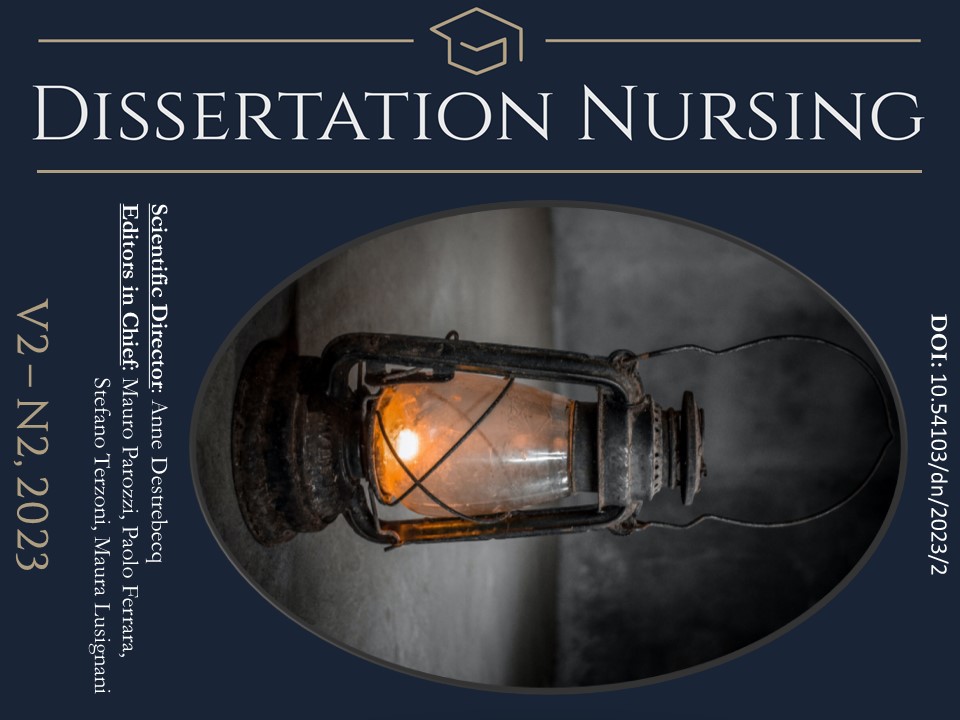Preoperative biofeedback improves continence recovery after open prostatectomy: a systematic review and meta-analysis
DOI:
https://doi.org/10.54103/dn/20383Keywords:
pelvic floor, open prostatectomy, urinary incontinence, rehabilitation nursingAbstract
BACKGROUND: Postoperative urinary incontinence is the overall result of urethral sphincter incompetence and modifications in urethral length after radical prostatectomy. Findings for preoperative interventions targeted at preventing post-prostatectomy incontinence include preoperative pelvic floor muscle training (PFMT) and biodfeedback (BFB), which can be managed by nurses in many countries and have been used for decades to speed up continence recovery after surgery.
AIM: to determine the effectiveness of preoperative biofeedback (BFB) for post-prostatectomy urinary incontinence compared to pelvic training without BFB, considering the variability between the results of the available studies.
METHODS: A systematic review and meta-analysis was conducted, analyzing the indications provided by the literature regarding preoperative biofeedback for preventing urinary incontinence after open radical prostatectomy, in terms of treatment regimens, timing for beginning the sessions, number of contraction and relaxation exercises, and scheduled work at home. Literature search on Pubmed, CINAHL, Cochrane Library, Web of Science, Scopus, EMBASE, and PEdro.
RESULTS: Despite only three papers being suitable for metanalysis, our results support BFB over written instructions for continence recovery after both 3 and 6 moths from surgery. Implementing progressive programs with many different muscular exercises and including relaxation are the main recommendations.
CONCLUSIONS: Preoperative biofeedback leads to improved urinary continence after 3 and 6 months from radical prostatectomy. Future studies should focus on the characteristics and number of pelvic muscle contractions required during biofeedback in order to maximize effectiveness.
References
Pattni N, Arzola C, Malavade A, Varmani S, Krimus L, Friedman Z. Challenging authority and speaking up in the operating room environment: a narrative synthesis. Vol. 122, British Journal of Anaesthesia. 2019. DOI: 10.1016/j.bja.2018.10.056
Wahr JA, Prager RL, Abernathy JH, Martinez EA, Salas E, Seifert PC, et al. Patient safety in the cardiac operating room: Human factors and teamwork: A scientific statement from the american heart association. Circulation. 2013;128(10).
Molina G, Berry WR, Lipsitz SR, Edmondson L, Li Z, Neville BA, et al. Perception of Safety of Surgical Practice among Operating Room Personnel from Survey Data Is Associated with All-cause 30-day Postoperative Death Rate in South Carolina. Ann Surg. 2017;266(4).
Zhao P, Li Y, Li Z, Jia P, Zhang L, Zhang M. Use of patient safety culture instruments in operating rooms: A systematic literature review. J Evid Based Med. 2017;10(2). DOI: 10.1111/jebm.12255.
Sexton JB, Makary MA, Tersigni AR, Pryor D, Hendrich A, Thomas EJ, et al. Teamwork in the operating room: Frontline perspectives among hospitals and operating room personnel. Anesthesiology. 2006;105(5).
De Andrade Lourenção DC, Tronchin DMR. Patient safety in the surgical environment: Translation and cross-cultural adaptation of validated instrument. ACTA Paulista de Enfermagem. 2016;29(1).
Nguyen G, Gambashidze N, Ilyas SA, Pascu D. Validation of the safety attitudes questionnaire (short form 2006) in Italian in hospitals in the northeast of Italy. BMC Health Serv Res. 2015;15(1).
Beaton DE, Bombardier C, Guillemin F, Ferraz MB. Guidelines for the process of cross-cultural adaptation of self-report measures. Vol. 25, Spine. 2000.
Sousa VD, Rojjanasrirat W. Translation, adaptation and validation of instruments or scales for use in cross-cultural health care research: A clear and user-friendly guideline. Vol. 17, Journal of Evaluation in Clinical Practice. 2011. DOI: 10.1111/j.1365-2753.2010.01434.x.
Bernalte-Martí V. Cross-cultural Adaptation of the Safety Attitudes Questionnaire Short Form in Spanish and Italian Operating Rooms: Psychometric Properties. J Patient Saf. 2022;18(3). DOI: 10.1097/PTS.0000000000000902.
Downloads
Published
Versions
- 2023-08-03 (3)
- 2023-08-03 (2)
- 2023-07-31 (1)
How to Cite
Issue
Section
License
Copyright (c) 2023 Stefano Terzoni, Mauro Parozzi, Bernardo Rocco, Chiara Sighinolfi, Giorgia Gaia, Laura Di Prisco, Lara Carelli, Roberta Lodini, Elena Sala, Agostino D'Antuono, Paolo Ferrara

This work is licensed under a Creative Commons Attribution-NonCommercial-NoDerivatives 4.0 International License.
Accepted 2023-07-30
Published 2023-08-03











